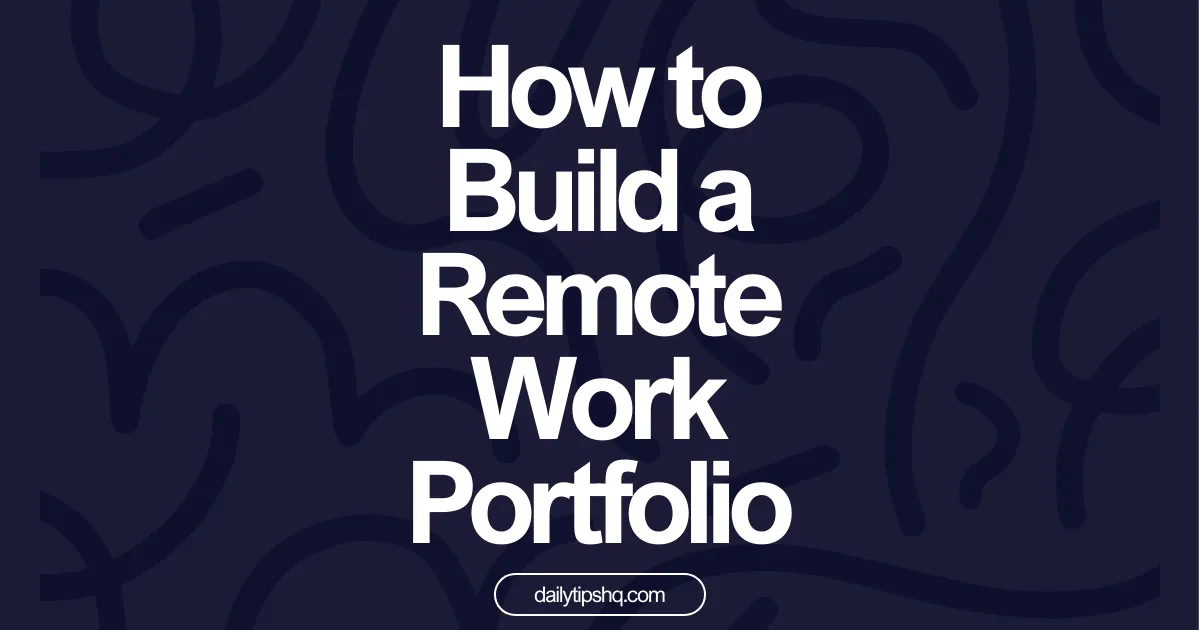How to Build a Remote Work Portfolio (Even If You’re a Beginner)
In the world of remote work, your digital presence is often your first impression. If you’re just starting out and wondering how to showcase your abilities without traditional experience, a remote work portfolio is your key to standing out.
Why a Portfolio Is Crucial for Remote Workers
Unlike traditional jobs, remote roles often rely heavily on your ability to communicate results digitally. Whether you’re applying for a freelance gig, contract job, or full-time remote position, a portfolio can make or break your application.
What to Include in a Remote Work Portfolio
- Project Samples: These can be real or mock projects. If you’re a writer, include articles or blog posts. Designers can showcase mockups. Developers can share GitHub repos.
- Case Studies: Briefly explain the problem, your solution, and the result. Metrics help a lot here.
- Testimonials or Reviews: Even from classmates, teachers, or early clients—social proof matters.
- Skill Highlights: List relevant tools, software, languages, or methodologies you’re familiar with.
- About Section: A brief story that positions you as a remote-ready talent, even as a beginner.
Platforms to Host Your Portfolio
You don’t need to be a tech wizard to get your portfolio online. Consider these beginner-friendly platforms:
- Notion: Great for text-based portfolios with clean design.
- GitHub: Ideal for developers and coders to show repositories and projects.
- WordPress: A classic for content creators, bloggers, or consultants.
- LinkedIn: Use the “Featured” section to link to projects or documents.
No Experience? Here’s What You Can Showcase
Don’t worry if you’re just starting. You can still fill your portfolio with:
- Passion Projects – Create something just for practice.
- Volunteer Work – Help a local business or non-profit.
- School Assignments – Rewritten in a more professional tone.
- Blog Posts – Show what you know and how you think.
Pro Tip: Keep It Updated
Your portfolio is a living document. Update it as you complete new work, take courses, or gain testimonials. Broken links or outdated content can hurt your credibility.
Common Mistake to Avoid
Don’t overcomplicate things. A flashy design doesn’t replace clarity. Focus on content and usability. Make it easy for someone to quickly grasp what you do and how well you do it.
Related Article
👉 What Are Examples of Remote Jobs?
FAQs About Remote Work Portfolios
- Do I need a personal website?
Not necessarily. Platforms like Notion or LinkedIn can be enough when you’re starting. - How many projects should I include?
Start with 2–3 solid examples. Quality matters more than quantity. - Should I pay for hosting?
Only if you’re ready to invest in your personal brand. Free options can work just fine at first.
Conclusion
Creating a remote work portfolio as a beginner may seem intimidating, but it’s absolutely doable. Start small, be authentic, and focus on demonstrating your potential. Over time, your portfolio will grow with you.
💡 Ready to take action?
Start your remote work portfolio today with one project. Choose a platform, write a short description, and get your work out into the world!


3 thoughts on “How to Build a Remote Work Portfolio (Even If You’re a Beginner)”